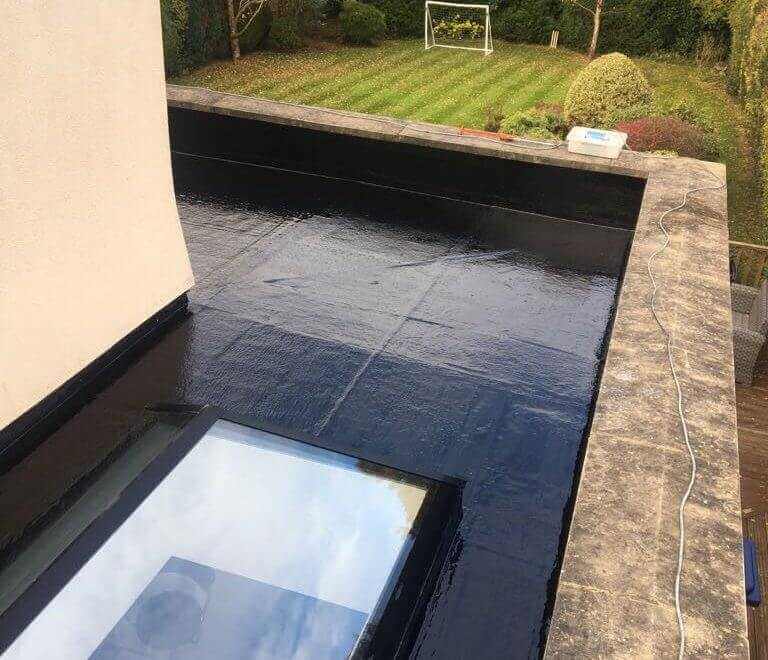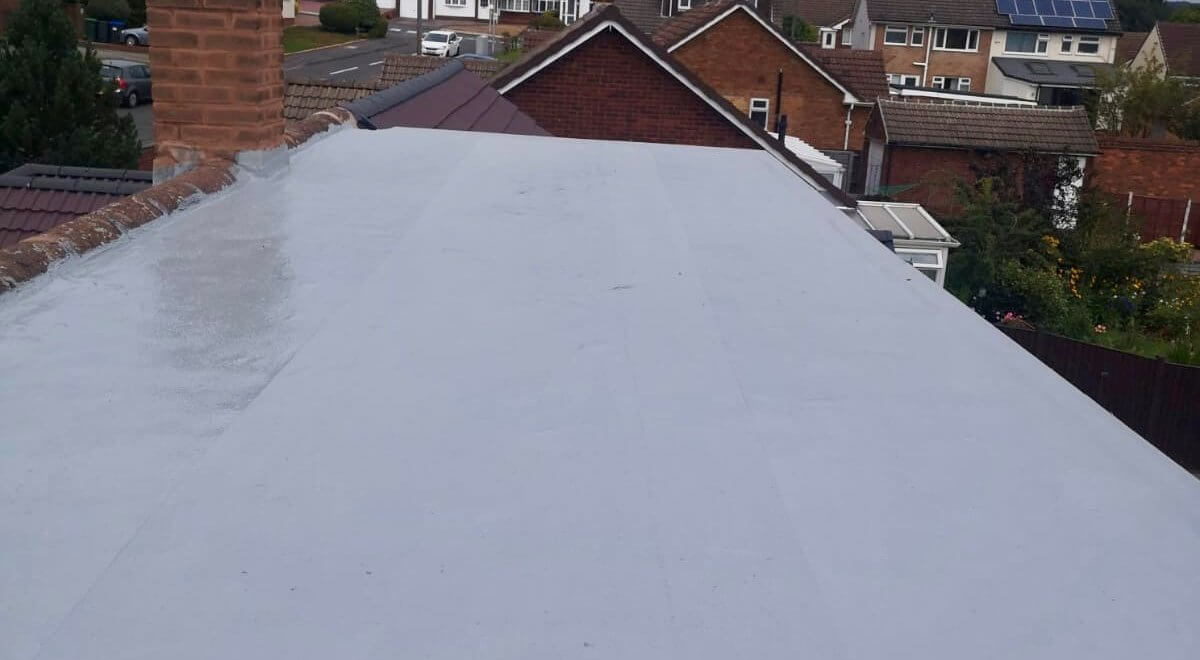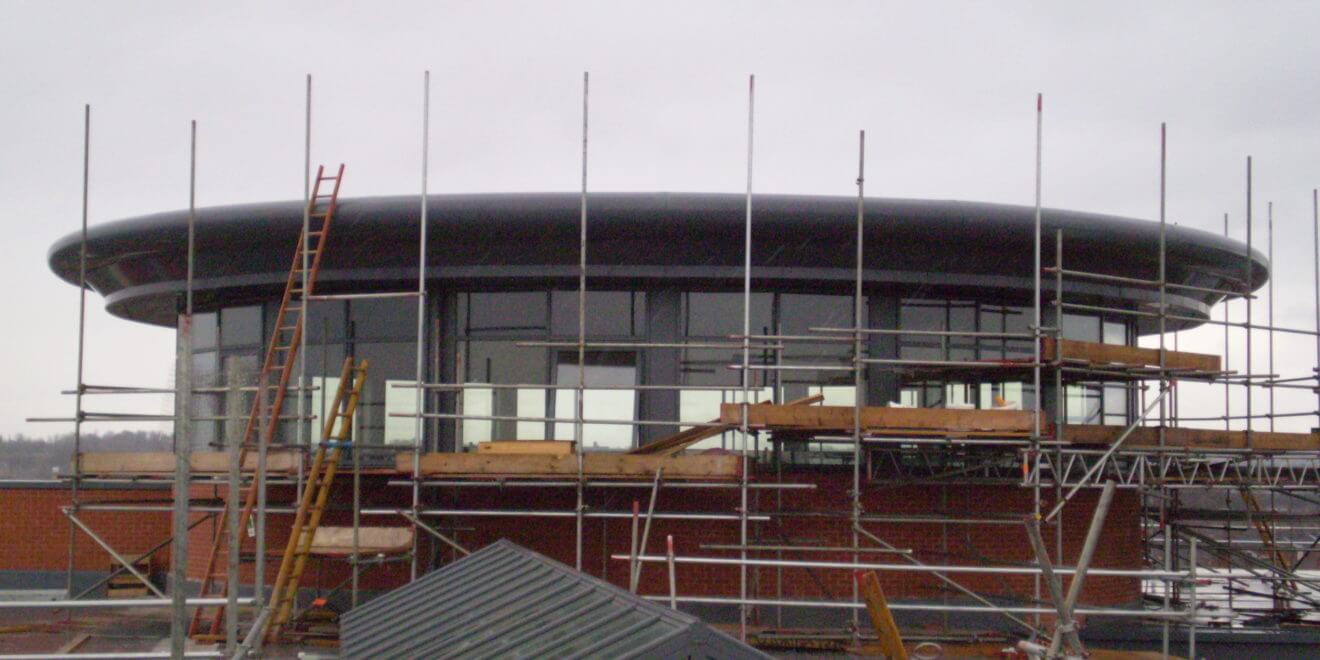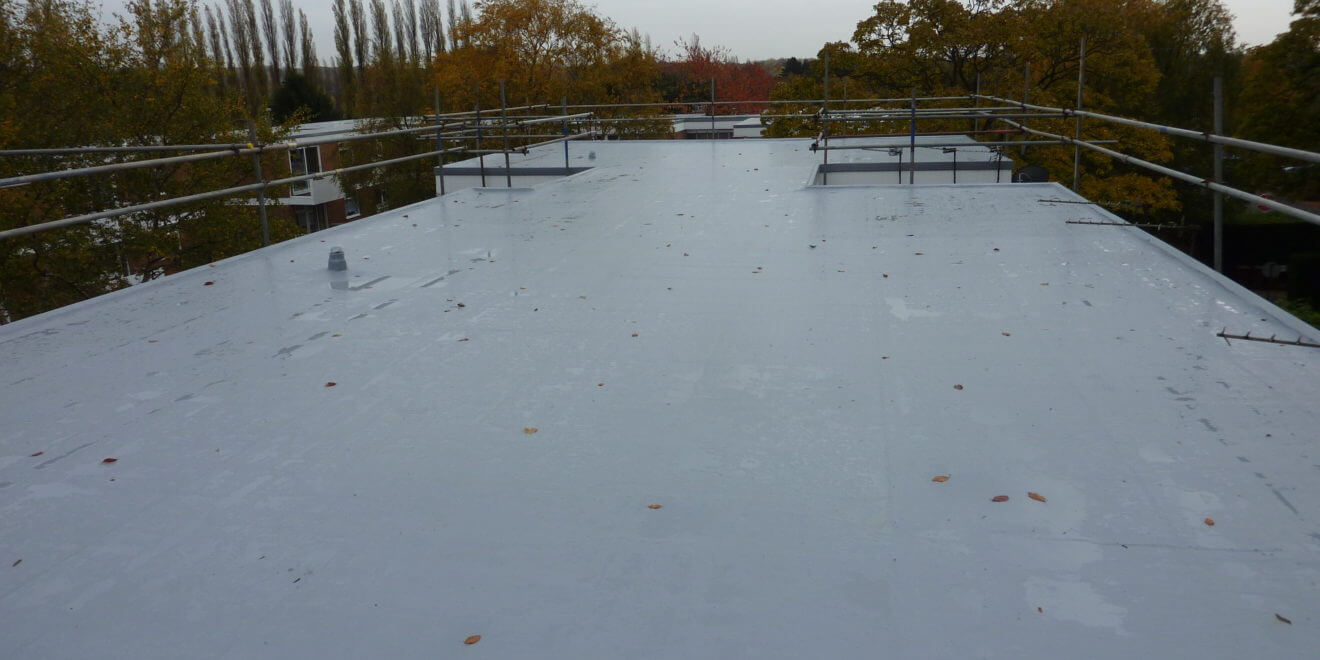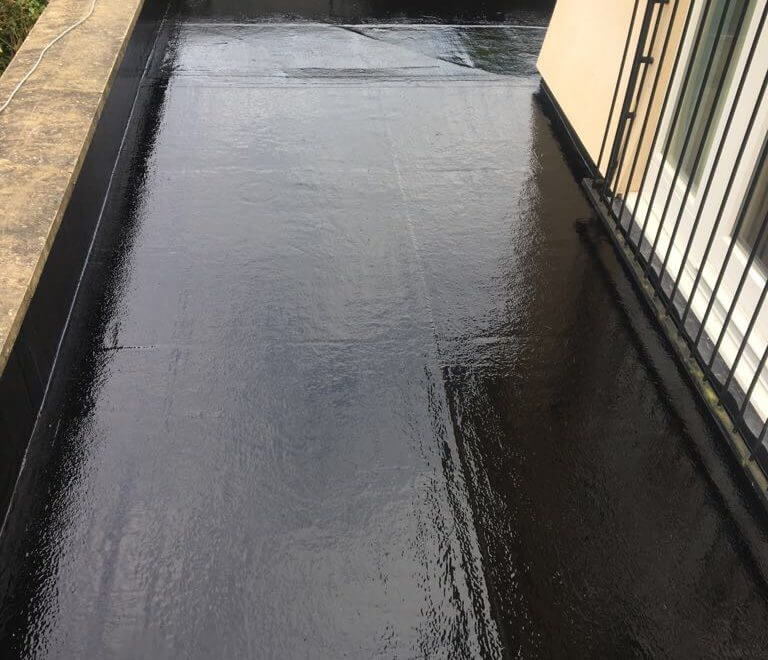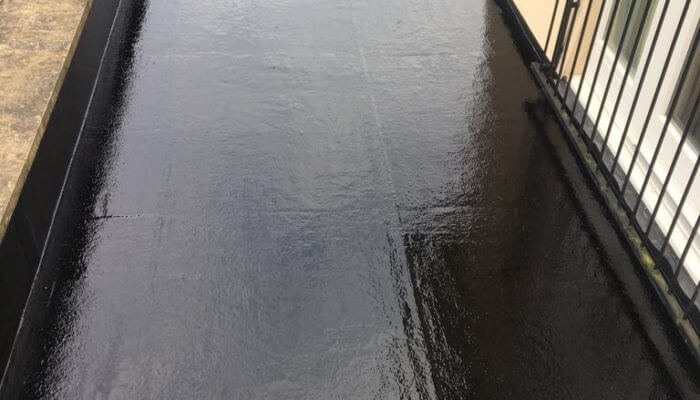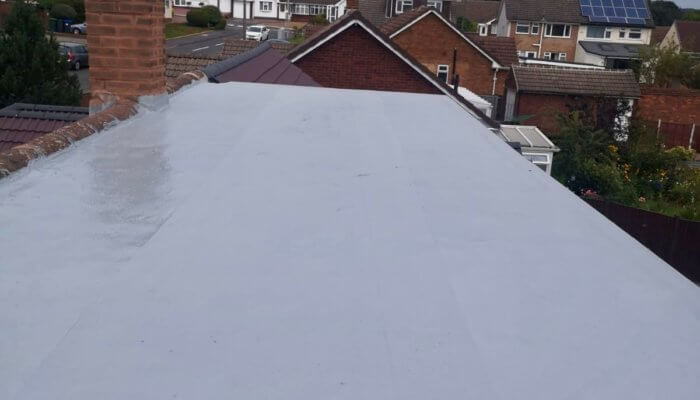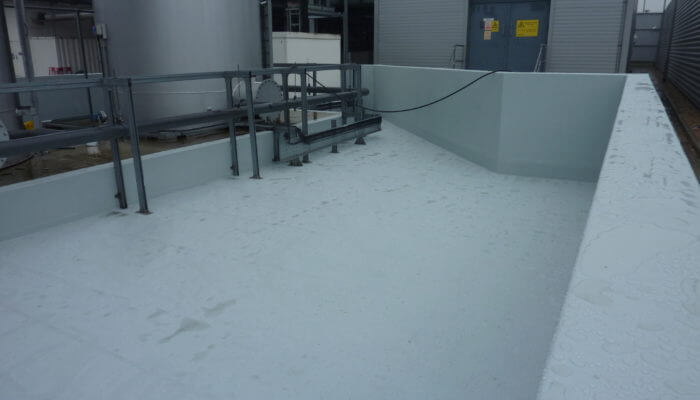Fibreglass roofs (also referred to as GRP roofs) are a popular choice for commercial buildings. On a traditional flat roof build-up, a fibreglass weatherproof layer offers numerous benefits over alternative solutions, such as single ply and bitumen-based layers, to name a few. These benefits include:
- Increased durability
- Lower maintenance requirements
- Easier to repair
- A stronger weatherproofed seal
- Increased energy efficiency
- Broader aesthetic design
Fibreglass (GRP) is made from thin strands of glass woven into a mat. The fibres are combined with a resin and form a strong, flexible product which can be easily moulded into a variety of shapes. This makes Fibreglass (GRP) an excellent choice where complex detailing is required. Pigment can also be added to the resin to create a wide range of colours.
Compared to a traditional bitumen-based and single ply weatherproofing layer, fibreglass offers higher resistance to foot traffic and impact from objects including, but not limited to, hail, dislodged tiles from neighbouring buildings or tree branches. The ease of maintenance and life expectancy of over 30 years, with correct installation and maintenance, makes fibreglass flat roofs a very attractive specification option for commercial buildings.
What is the durability of a fibreglass roof?
Fibreglass is a durable and long-lasting material that can withstand harsh weather conditions such as extreme temperatures (both hot and cold), wind, rain and hail strikes. In addition, fibreglass has high resistance to the effects of UV light. A fibreglass flat roof is installed with no seams, creating a continuous surface which is highly resistant to water ingress. A properly installed fibreglass roof will have a long lifespan and require minimal maintenance.
Research shows that a properly maintained fibreglass roof can last for 30 years or more compared to around 20 years for a traditional bitumen felt based roof covering.
How much maintenance does a fibreglass roof need?
As with all roofing systems, to ensure that they perform as intended for the life of the building and look their best throughout the years, they should be regularly inspected. Reputable flat roof weatherproofing installers may offer warranties that cover their products and installation. These warranties can be very beneficial and long-term (up to 25 years in some cases), however, regular inspections, with around one a year, may be required to maintain this benefit.
Because of the durability and longevity of GRP fibreglass, however, the only expected maintenance typically required for fibreglass flat roofs is to keep them clean – this helps the surface maintain its striking finish. Cleaning fibreglass flat roofs simply involves removing debris, such as leaves, tree branches, moss, or other growth and giving the surface an occasional wash with a mop.
Are fibreglass roofs difficult to install?
Fibreglass is a lightweight material that is cold applied meaning no torch or flame is required to heat the membrane. This can reduce the installation time and avoids the need to use bottled gas and torches (hot works). The fibreglass layer is applied using a roller and a resin topcoat provides the tough, final finish. An easier installation saves considerably on time and costs.
Is a fibreglass roof more expensive than a traditional system?
The belief that fibreglass is a more expensive system is a misconception when looking at the overall long-term picture. The lifespan of a fibreglass membrane itself is typically longer than that of felt or single ply solutions. The higher initial cost of a fibreglass finish is offset by the longer lifespan of the roof. This means that overall, there is a long-term cost benefit to using fibreglass.
Fibreglass roofs and fire performance
Fibreglass has high resistance to the spread of fire which is an important consideration when specifying a roof. A roof must satisfy the requirements of the Building Regulations Approved Document Part B which applies to fire safety in construction. Section B4 covers the requirement of the external walls and roof of a building to adequately resist the spread of fire over the walls and roof of the construction, as well as from one building to another. The full document can be freely downloaded here for more information.
We provide a complete roofing service from initial site surveys, as well as design and installation of a roofing system, through to aftercare and are approved installers of cold-applied liquid fibreglass roofs.
To find out more, please visit the fibreglass roofs solutions page and contact us for any project requirements around fibreglass roofs.
